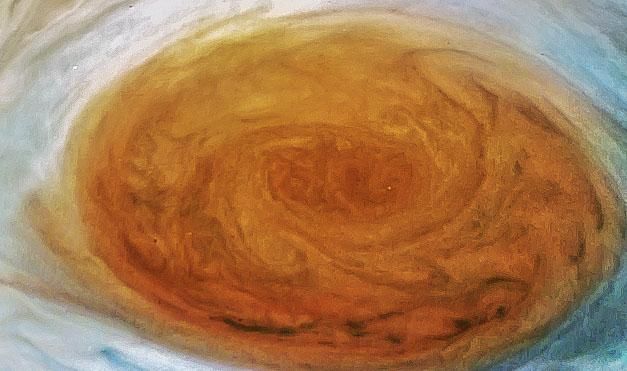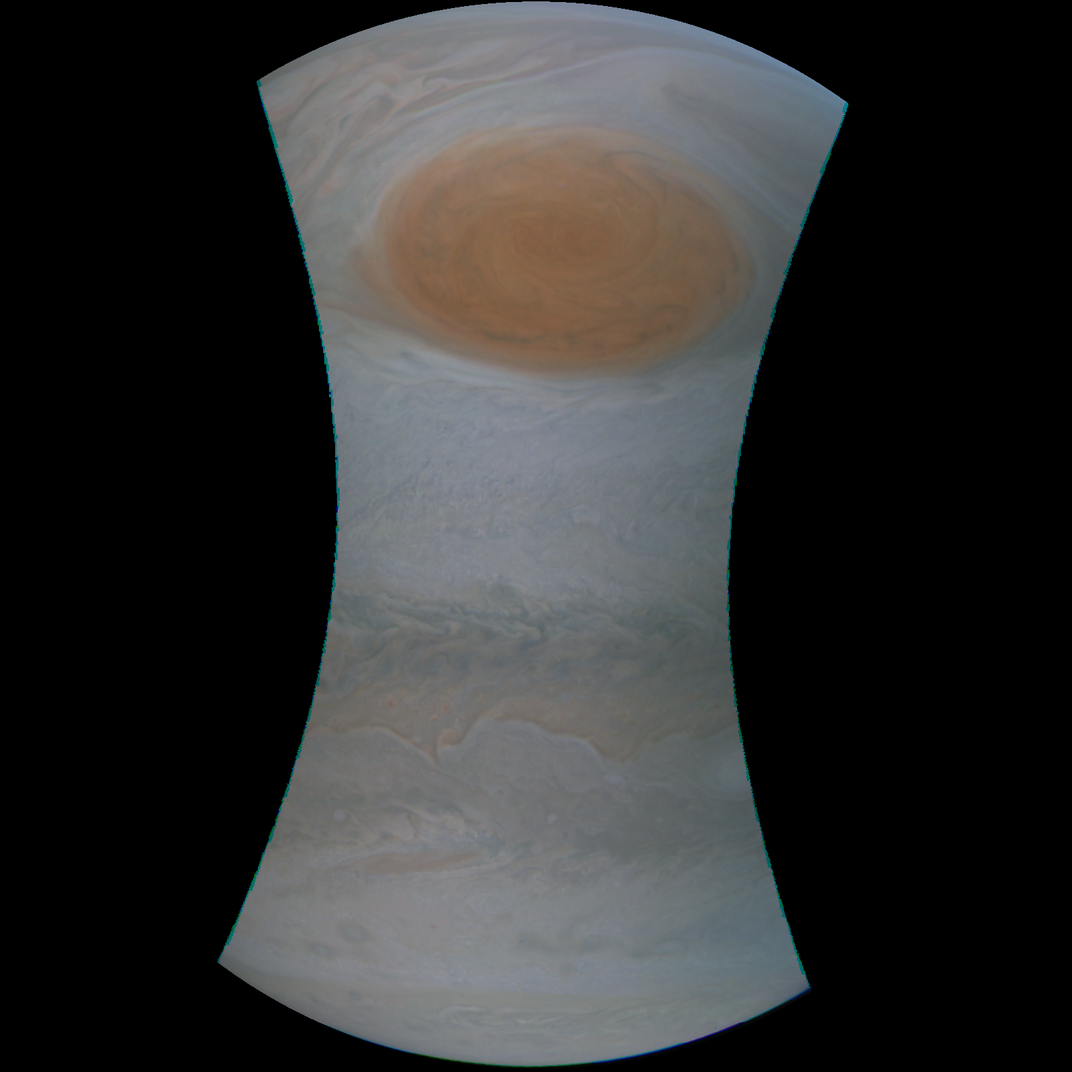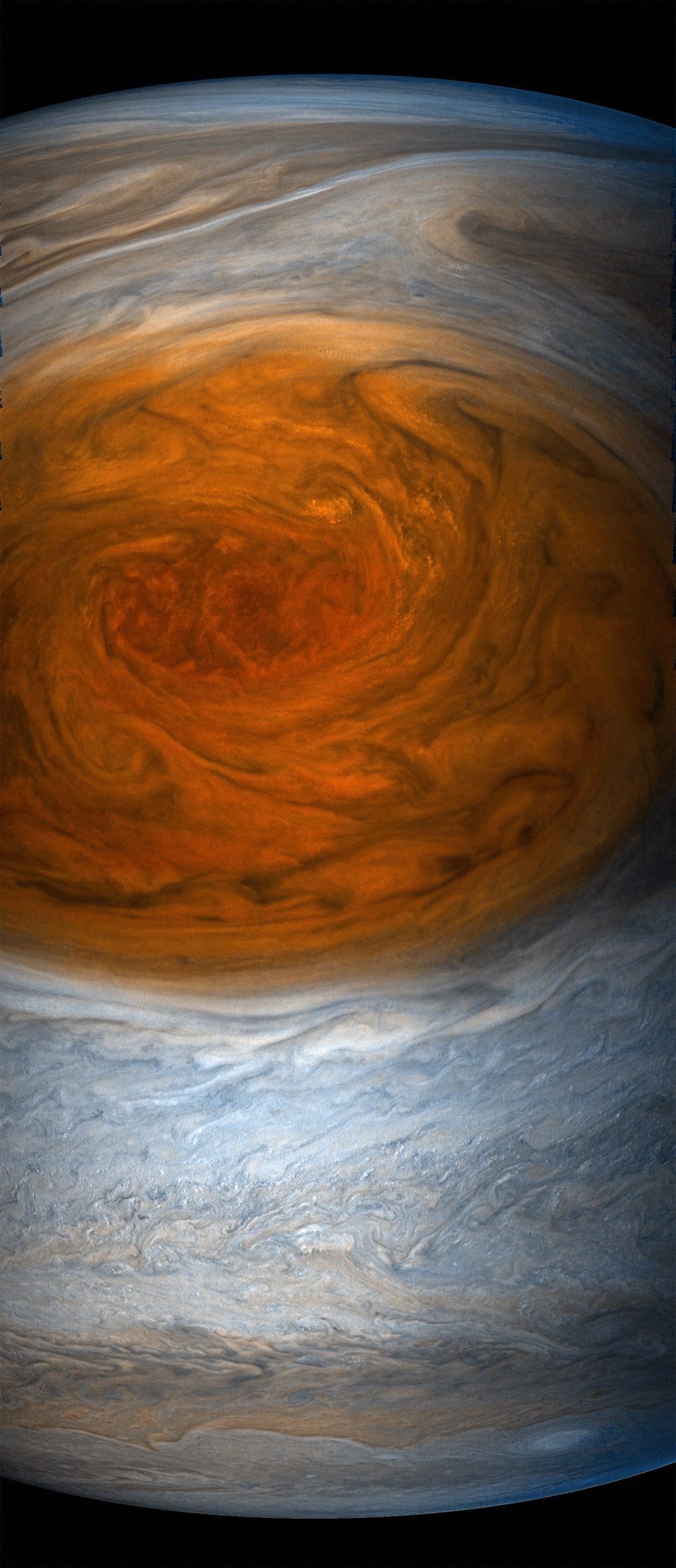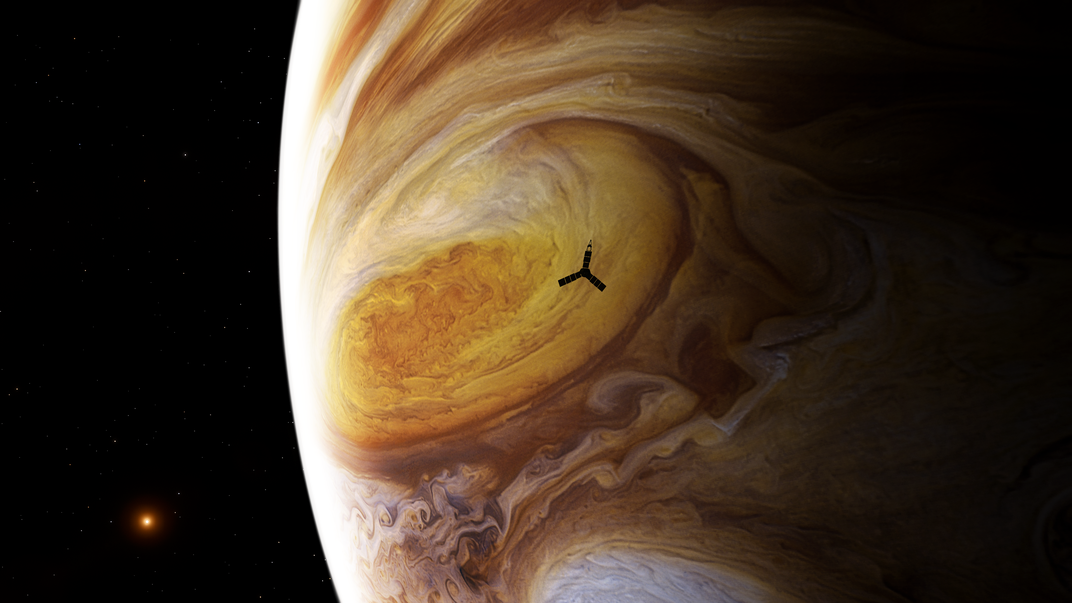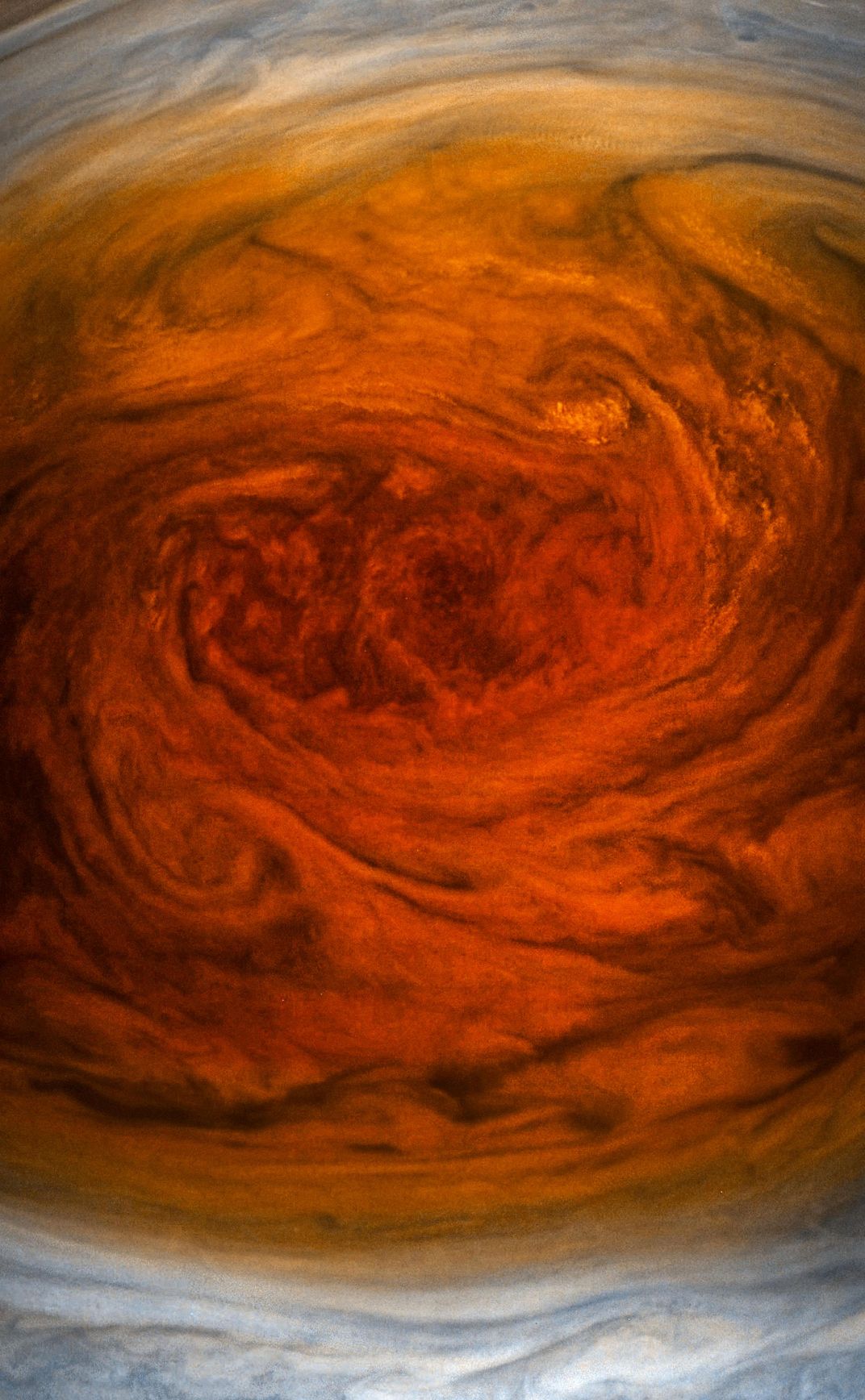Stunning Images Capture First Close-Up With Jupiter’s Great Red Spot
Take a peek at the solar system’s largest storm
Today, NASA released the first photos from the Juno satellite's close encounter with the solar system's largest storm.
Launched in 2011, Juno was sent to orbit the large gas giant and study what lies beneath its colorful swirling clouds, with the ultimate goal of learning how the planet and the rest of our solar system came to be. The little craft entered orbit around Jupiter last July, and has been sending back stunning photos and sounds of the planet since. Every 53 days the little craft transits the planet from pole-to-pole, capturing pictures and data to beam back to earth-bound scientists.
Earlier this week Juno had the latest close encounter of its elliptical orbit, reports Rachel Becker of The Verge, coming within just 5,000 miles of the surface of the Great Red Spot. The orbit of the craft, however, is highly eliptical so at its closest approach to the gas giant Monday evening, the satellite just skimmed the tops of Jupiter's clouds from around 2,000 miles up.
"For generations people from all over the world and all walks of life have marveled over the Great Red Spot," says Scott Bolton, head of the Juno mission, in a press release. "Now we are finally going to see what this storm looks like up close and personal."
The Spot is one of Jupiter's most iconic features. Astronomers spied the massive feature as early as the beginning of the 19th century—but possibly even earlier. This swirling storm stretches just over 10,000 miles wide, according to recent measurements—roughly 1.3 times the diameter of Earth. It's akin to a super powerful hurricane, with wind speeds up to 400 miles per hour and air temperatures over 2,400 degrees Fahrenheit. “The Great Red Spot is basically the largest storm in the entire solar system,” Bolton tells Stav Ziv of Newsweek.
But in recent years, the storm seems to be dying down. In 2015, NASA scientists announced that the Great Red Spot appears to be shrinking by roughly 580 miles per year. And in the 1800s, researchers estimate it measured more than 25,000 miles across, Nadia Drake reports for National Geographic. But exactly why the storm is shrinking remains unknown. As Bolton tells Ziv, "it’s very puzzling.”
These photos could start to solve that puzzle.
Editor's Note December 12, 2017: The comparitive size of the Great Red Spot has been corrected. The spot is 1.3 times the diameter of Earth. We apologize for the error.
